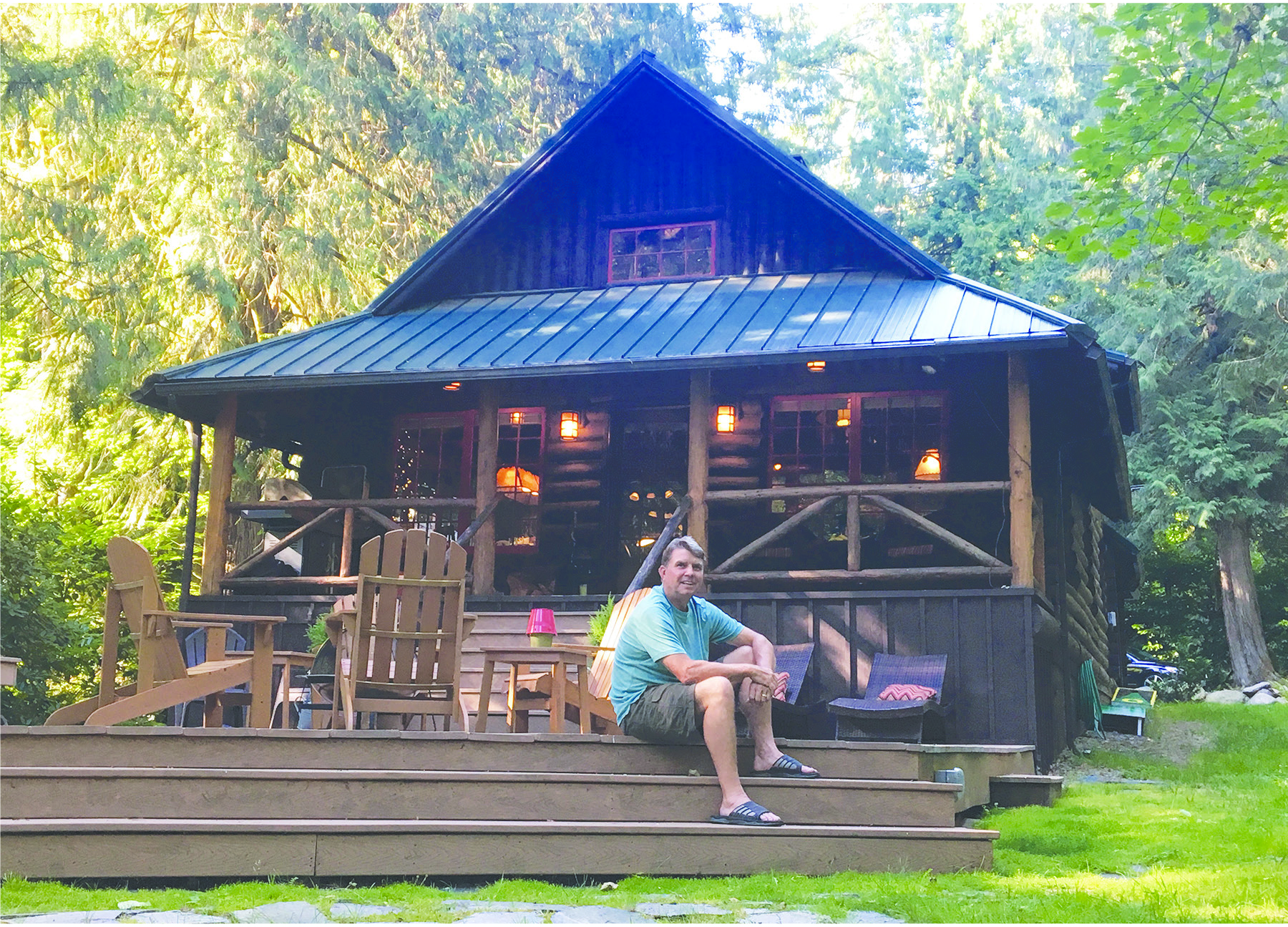By Benjamin Simpson
The Mountain Times
Note: This article originally appeared in the August 2018 issue of The Mountain Times and has been updated.
Henry Steiner didn’t imagine his cabins would last generations. Constructed around Mount Hood during the first half of the 20th century by the German master craftsman and his family, the cabins were intended as vacation homes for Portlanders that would last for 20 or 30 years before succumbing to the elements.
“[They] didn’t think the cabins would be there – they were trying to send people home with a paycheck,” said log cabin builder Mark Fritch, relaying his conversations with Henry’s son, John Steiner, about the construction of the acclaimed cabins, many of which were crafted during the hardships of the Great Depression. Fritch formed a friendship with John during John’s later years and worked to repair and maintain the family-built cabins. Nestled on the banks of Henry Creek in Rhododendron, two Steiner cabins have recently seen dramatic restoration. One cabin has been thoroughly modernized as a contemporary family retreat while maintaining the classic details of Steiner craftsmanship. The other is in the midst of a lengthy renovation to return the cabin to its 1935 condition. Both cabins will be part of the 14th annual Steiner Cabin Tour on Saturday, Aug. 11. The tour is conducted by the Mt. Hood Cultural Center and Museum and is currently sold out.
Fritch said that John Steiner described to him how the scarcity of the era had led the family to employ resourceful building methods utilizing available materials in the surrounding land, with little thought of creating a lasting historical impact. Now, the nearly 100-year-old structures are praised for their artistic and skilled construction, have been recognized on the National Register of Historic Places and stand as iconic examples of the Oregon Rustic Style architectural movement.
Two thoughtful restorations
Dan Taylor fell in love with Steiner cabins during college in the ’70s while staying at his friend Dan Kavanaugh’s family cabin. The two school friends ran power to an old outbuilding on the property they nicknamed “The Natural High” and used it as a summer hangout for their adventures on the mountain.
Years later when the opportunity to purchase a 1932 Steiner cabin down the street from his friend’s place came up, Taylor jumped on the opportunity, purchasing the cabin with his brother and sister. The vacation home came with a quirky mid-century remodel with orange shag carpet, lime green vinyl flooring and a stove with only three working burners. It served as a happy family getaway for many years.
After years of family use and with children growing up and going off to school, Dan and his wife Mary Kay found themselves the sole owners of the cabin. They embarked on an extensive restoration to modernize the cabin while retaining the original Steiner character with the aid of Fritch and Portland designer Rhoda Divers.
The rehabilitation involved plumbing and electrical updates and hefty structural repairs, including replacing rotting support logs in a corner of the house. The Steiner cabins were constructed without foundations and frequently developed rot in the sill logs on the ground level.
“We tried to match and maintain the integrity of the original look,” Taylor said while describing the intensive process of sanding and staining replacement pieces to match the existing logs after 80 years of exposure to the elements. The Taylors pulled up the carpets and the vinyl flooring in the kitchen to reveal beautiful fir floors and stained the wood interior of the cabin to create a warm and inviting living space. Foundation rot in the kitchen posed another challenge and required enlisting a mill to source wood to match the old fir planks and cut new flooring.
They discovered masonry constructed by John Steiner behind a hearth added years after original construction. They also restored the original windows, maintaining the signature Steiner red frames.
Other elements of the cabin have been brought into the modern era, including opening up the living space with a kitchen island with granite countertops, replacing the old three-burner stove, restructuring of the bathrooms and adding space-efficient cabinetry to the mudroom. The rear deck has been expanded to flow down to the creek and add additional room for congregating, in concurrence with Henry Steiner’s intention that the stream would be a focal point for cabin life. The end result is a home the family loves, one that maintains the comforting elements of a classic log cabin while adding modern elegance and convenience.
“It’s a cozy, fun home – it’s very enjoyable,” said Taylor about the finished cabin.
Further downstream lies George and Binnur Jutras’s 1935 Steiner cabin, also undergoing major rehabilitation. George discovered the cabin while on a mountaineering trip to climb Mount Hood and is determined to return the cabin to its historic state for use as a base camp for his climbing trips and explorations of the region.
The Jutras’s cabin had not been significantly altered by previous owners and was in close-to -original condition when the family acquired it, although in need of major repair.
“It’s not just a log cabin – it’s a lot of history involved,” George said while describing his approach to the restoration. “I want to bring it back to the condition it was in after the last nail was driven.”
George is also working with Fritch to address structural issues the cabin faces. Two large firs towered over a corner of the cabin when purchased, and their roots caused the cabin to tilt at a precipitous angle.
“If you put a ball on one end it would roll to the other,” Jutras said about the extent of shifting that had occurred to the cabin.
The firs were laboriously excavated and removed before the cabin was leveled and placed on a new foundation. The foundation repairs revealed that the sill logs, as well as some vertical logs in the kitchen, were plagued with rot and had to be replaced.
The roof has been returned to cedar shake, and the Jutras family sourced materials from a dilapidated Steiner cabin on Hwy. 26 to replace five rotted-out windows with originals and provide replacement planks for the kitchen floor.
The cabin features many notable Steiner design elements including a sunburst gable, a snow-bent log bannister, doorknobs and curtain rods fashioned from gnarled tree roots and bay windows in a kitchen alcove opening onto the creek. It contains signature masonry work by John Steiner, who used basaltic fieldstone to construct the fireplace. The cabin had slowly settled over the past 80 years, causing the fireplace to tilt and eventually split and crack along the back. While leveling and reconstructing the cabin, Fritch discovered large scorch marks on the logs in the wall behind the fireplace.
“It was two or three large fires away from burning down,” Fritch stated.
With these issues resolved, the cabin is well on its way to returning to its original state. The Jutras have even procured a 1934 stove refurbished to use propane and a retrofitted 1930 refrigerator to painstakingly recreate the detail of the era. “I want to make it feel like you’ve stepped back in time,” George said about his family’s project of transforming the historic Steiner cabin.



